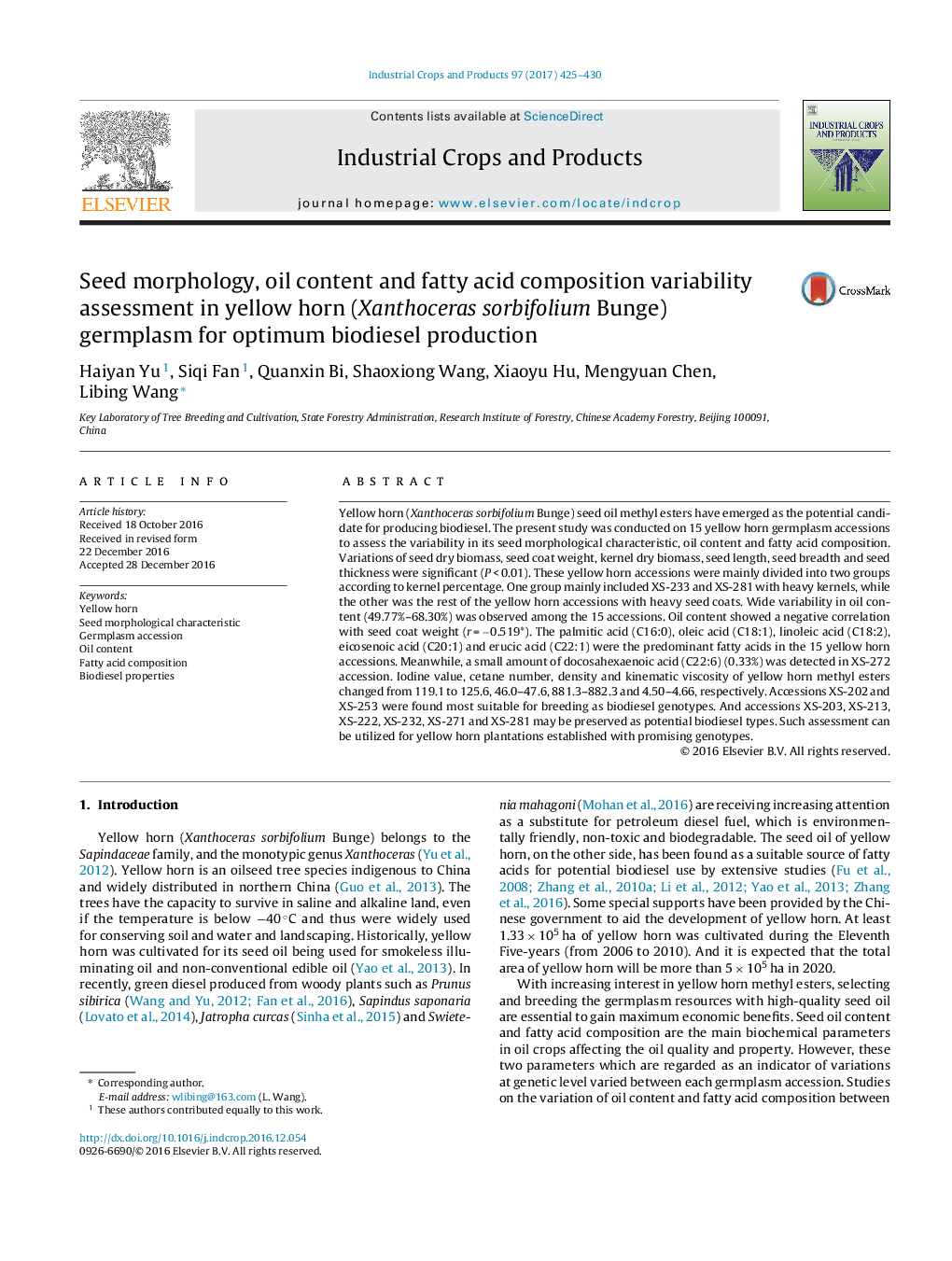| Article ID | Journal | Published Year | Pages | File Type |
|---|---|---|---|---|
| 5762229 | Industrial Crops and Products | 2017 | 6 Pages |
Abstract
Yellow horn (Xanthoceras sorbifolium Bunge) seed oil methyl esters have emerged as the potential candidate for producing biodiesel. The present study was conducted on 15 yellow horn germplasm accessions to assess the variability in its seed morphological characteristic, oil content and fatty acid composition. Variations of seed dry biomass, seed coat weight, kernel dry biomass, seed length, seed breadth and seed thickness were significant (P < 0.01). These yellow horn accessions were mainly divided into two groups according to kernel percentage. One group mainly included XS-233 and XS-281 with heavy kernels, while the other was the rest of the yellow horn accessions with heavy seed coats. Wide variability in oil content (49.77%-68.30%) was observed among the 15 accessions. Oil content showed a negative correlation with seed coat weight (r = â0.519*). The palmitic acid (C16:0), oleic acid (C18:1), linoleic acid (C18:2), eicosenoic acid (C20:1) and erucic acid (C22:1) were the predominant fatty acids in the 15 yellow horn accessions. Meanwhile, a small amount of docosahexaenoic acid (C22:6) (0.33%) was detected in XS-272 accession. Iodine value, cetane number, density and kinematic viscosity of yellow horn methyl esters changed from 119.1 to 125.6, 46.0-47.6, 881.3-882.3 and 4.50-4.66, respectively. Accessions XS-202 and XS-253 were found most suitable for breeding as biodiesel genotypes. And accessions XS-203, XS-213, XS-222, XS-232, XS-271 and XS-281 may be preserved as potential biodiesel types. Such assessment can be utilized for yellow horn plantations established with promising genotypes.
Related Topics
Life Sciences
Agricultural and Biological Sciences
Agronomy and Crop Science
Authors
Haiyan Yu, Siqi Fan, Quanxin Bi, Shaoxiong Wang, Xiaoyu Hu, Mengyuan Chen, Libing Wang,
